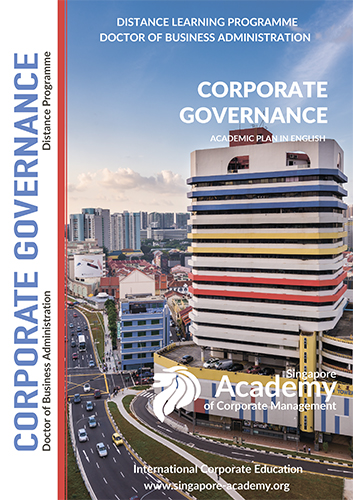PERSONAL BLOG
BYKOV ANDREY YURIEVICH
Doctor of Historical Sciences, PhD / Doctor of Philosophy
Dean of the Faculty of Social Sciences
Education:
St. Petersburg State University, St. Petersburg State University, Doctor of Historical Sciences
St. Petersburg State University doctoral studies RGI, doctoral candidate
Altai State University of History, Candidate of Historical Sciences
Karaganda State University of History, diploma with honors
PhD of the Singapore Academy of Corporate Management under the program "Sociology, Political Science, Cultural Studies, Philosophy, Economics"
OOO Trading House RSDS, Deputy General Director;
State Corporation "Rostec", Chief Expert of the Human Resources Department;
Project "PLATFORM 99", project coordinator;
LLC "Knauf Service", Director of Training and Development "Academy Knauf CIS";
Professor, Singapore Academy of Corporate Management.
EXPERTISE AND AUTHOR'S PUBLICATIONS
HISTORICAL CONCEPT FOR THE FORMATION OF THE BORDERS OF RUSSIA AND THE USSR IN THE XX CENTURY
The process of folding a single space, which became the territorial basis for the later delimitation and the formation of "new borders", has a long history. Here are just some of the strokes of the process of formation of this space. Since 1654, when the Pereyaslav Rada approved an agreement on the transfer of the Poltava, Kiev, Chernihiv, Podolia and Volyn regions, the reunification of Ukraine with Russia began.
READ MORE
KHAN ABULKHAIR, SULTAN BARAK AND THE ORENBURG ADMINISTRATION IN THE 40-50S OF THE XVIII CENTURY
In the second quarter of the XVIII century. Of the Ak Suyek nobility, the most popular among the Kazakh people were the khans Abulkhair and Abulmambet, the sultans Barak, Yeraly, Nuraly and Ablai, as well as representatives of the Kara Suyek nobility, batyrs Dzhanybek, Bukenbay and biys Kazbek and Tole. Each of them, to one degree or another, tried to strengthen his own influence. One of the means of this was the relationship (cooperation or opposition) with the Russian administration. Kazakh khans and sultans have repeatedly appealed to the Russian government with a request to build cities and fortifications for them, to provide them with special Russian military units.
READ MORE
KHAN POWER OF THE KAZAKH: RANK AND/OR POSITION
FORMATION OF THE RUSSIAN-KAZAKH BORDER IN THE XVI - EARLY XIX CENTURIES
In the 15th century, the Moscow princes managed to create the so-called guard service in the Russian border towns, the task of which was to monitor the advance of the enemy troops and notify the border governors about this. And only at the end of the 16th century did a guard, village and field service arise, the main task of which was not only to protect the border, but also to explore and agriculturally colonize the border territories.
READ MORE
THE RUSSIAN-JUNGAR DIFFERENCE IN THE IRTIS: SIGNIFICANCE AND CONSEQUENCES
The defeat of Kuchum was considered by the Moscow court as an automatic entry of all territories and population of the former Siberian Khanate into Russia. In particular, the territories of the basins of the Ob and Irtysh rivers are indicated as part of the state. This is evidenced by the diplomatic correspondence of that time.
READ MORE
ETHNO-SOCIAL STRUCTURE OF THE KAZAKH SOCIETY OF THE XVII-XVIII CENTURIES
In the historical literature there is no common understanding of the term "Kazakh clan". In particular, a very broad interpretation of this category has been established in Russian historiography. Such associations as argyn, kypchak, bayuly, shaprashty, ysty are called genus. As ethnological studies show, the above-mentioned ethnic units are tribes, and bayuls are even a union of tribes. At the same time, such units as karakesek, adai, etc., which correspond to the Kazakh concept of “ru” (genus), are also called genus in domestic science. We will consider the concept of genus in the latter sense.
READ MORE
THE IMAGE OF SINGAPORE ABROAD: MECHANISMS OF FORMATION, ROLE AND SIGNIFICANCE
The authors presented their own point of view on the regulation of the processes of formation and functioning of the image of Singapore in the international arena as a global trade, financial, logistics and technological hub and a "safe haven" for foreign companies and a prestigious place of work for professionals. The image is formed as a result of purposeful, systemic activities of responsible government agencies, acting in many ways similar to the departments of large business corporations.
READ MORE
VIDEO BLOG ON ACADEMY CHANNEL SACM TV, SINGAPORE
New Year. How do we treat time?
Students' Day or Tatyana's Day
New Year according to the Eastern calendar
Imperial Academy of Sciences of Russia
Memorial Day of Heroes-Internationalists
Defender of the Fatherland Day
International Women's Day
International Cosmonautics Day
Formation of state borders
100 years of the formation of the USSR
Bologna education system
Requirements for writing a PhD dissertation
EDUCATIONAL PROGRAMS AND SEMINARS OF THE CHAIR
PhD PROGRAM, SINGAPORE

PRE-DBA COURSES, SINGAPORE

DISTANCE SEMINARS

EU CERTIFICATION







